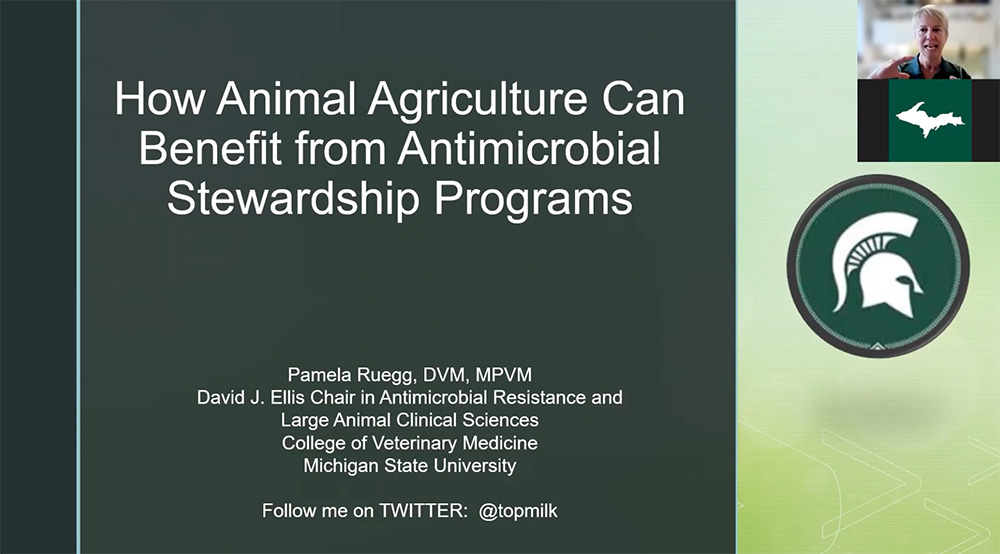ANTIBIOTIC STEWARDSHIP
Our primary mission is to perform and communicate research that helps dairy farmers maintain healthy cattle and use antimicrobials in a way that is both economically and socially responsible. We emphasize development and implementation of practical strategies that help farmers prevent infectious bacterial diseases that may require antibiotic treatments.
In this video, Dr. Ruegg explains how Animal Agriculture Can Benefit from Antimicrobial Stewardship Programs.
